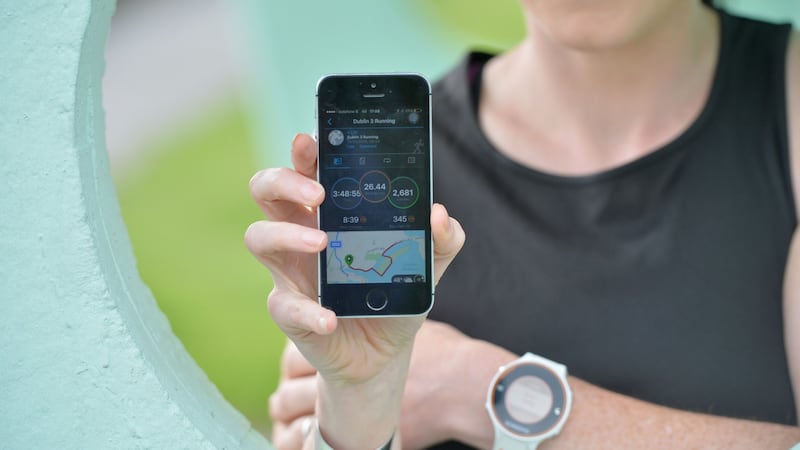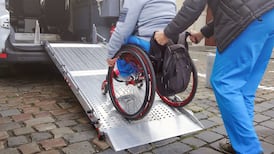There is no easy way of explaining why anyone would want to run for 24 hours, nonstop, covering a distance of about 100 miles. In some ways the only people who will ever understand it are the ones who have actually run that far.
"When I mention the 24-hour race to people they say that's amazing, well done," says Anne Jennings. "Even though I haven't actually done it yet. I suppose they're saying well done for even thinking about it. So yes, it's a hard thing to explain alright. I just love getting into the zone, running for as long as I can."
So Jennings is probably as good a person as anyone to explain the "why", or at least why she's even thinking about it. The Energia Belfast 24-hour race, set for June 25th-26th, will see her and a few hundred others run a continuous 1.7km loop of the city's Victoria Park, starting at noon on the Saturday and finishing at noon on the Sunday. It is billed as a race although it's hardly about who wins, but simply about running as far as possible, preferably beyond the 100-mile mark.

It’s all part of that somewhat mystifying and slightly secret sect of running known as the ultra marathon, although normally in set distances ranging from 36 miles to 100km. What also makes her participation that little bit more intriguing is the fact that for most of her life Jennings never considered herself a runner.
“I definitely consider myself a perfectly normal person,” says Jennings, which of course she is: at 39, married with two daughters (aged 16 and 21), and running her own interior design business, there’s certainly no strange or unusual reason as to why she wants to run for 24 hours, other than for the sheer pleasure of it, the challenge it presents, or simply because she can.
Sporty
Originally from Mayo, now living in Clonee, she always considered herself the sporting type, although just not a runner: she played Gaelic football in school and later enjoyed playing women’s rugby with Ashbourne RC, before that team gradually wound down.
“Even then we’d run laps of the pitch, and I hated it. But the team sort of finished up and I was looking for something else just to keep fit.
“A few friends had run some local 10km, and that was the start it. At first I’d go down to the Phoenix Park and run from lamppost to lamppost, and it just took off from there.”
That was just four years ago, a sort of love at first step. Her first race was the 2012 Great Ireland Run, and after that she signed up for the Dublin Marathon, not quite realising the challenge of it: “It was more stubbornness which got me through. I got to 18 miles, and my legs just seized up, but I pressed on to the finish.”
It left her with that classic mix of emotions, agony and ecstasy, although with more emphasis on the agony. Determined to get the balance right next time, she signed up with Irish Times Health+Family running coach Mary Jennings (no relation) who also runs the Forget the Gym training group, and immediately found the shared experience far more pleasurable.
She returned to the Dublin Marathon in 2013, conquered that on more even terms, and with that began thinking bigger, or rather further. She’d heard about the ultra marathon distances, and, in 2014, entered the Courtmacsherry 36-mile event, in Cork.
“I suppose I was just curious, of what else the body was capable of, and the challenge too. It’s not about being the fastest, but racing against yourself, really. I know I’m not the fastest runner, but longer running is part of my make-up, maybe.
“When you play a game, you always wonder is there more to give. When you finish a marathon, it’s very satisfying. But I heard about these races, and I felt, well, the longer the run the better I feel, rather than just another 5km park run, or blasting a 10km.”
Advice
After finishing in Courtmacsherry, she began taking some advice from Keith Whyte, the Clare man who is one of Ireland’s leading ultra marathon runners. She also began training on a more regular basis with Dublin Bay Running Club, where the emphasis is on longer distances. The next big jump came last July when she took on the Keith Whyte 100km, in Cork, and ended up the first women finisher, in just over 11 hours.
“The first aim in a race of 100km is to keep going, not to stop, with the exception of a few toilet breaks. It’s about pacing yourself as best you can. Eat little and often, and maybe walk while eating. A few flapjacks, bananas, easily digestible foods, and of course staying well hydrated as well.
“Having Keith around was so encouraging too. He coaches me and it’s great to get his advice and from people at the club as well, such as Ger Copeland. We train by the hour, more than the mile. It might be four hours, five hours, whatever. Usually two easy days, two faster days, one hill session, and a long run.”
She likes to vary those training runs too, sometimes running from her home in Clonee, through Phoenix Park, out to Sandymount, the end of Poolbeg lighthouse, and back to Clonee; or else running to Clontarf, up Howth Head, and back.
To prepare for the Energia Belfast, Ireland’s only 24-hour race, she’s been running a marathon every weekend for the past six weeks, including in Limerick, and also in Rome. Still, it all begs the question: why 24 hours?
“It started in the new year, again mostly with some curiosity, to see what else I could achieve. I wanted to get the 100km out of the way first, but had heard about the 24-hour race. I knew a few people who did it last year, and they enjoyed it. It’s a great mix of people, so there are always people running with you, always the support of someone around you, to chat to.
“And they’re very level-headed, and there’s no pretentiousness, or ego. They do it because they love running, and a lot of these events are low numbers, aren’t hyped up or commercial, and that’s what is nice. My husband, Andrew, is very supportive too, but I certainly don’t think it’s for everyone.
100-mile aim
“The aim in Belfast is to get to the 100-mile mark, and there’s no better way to do that than with people around you. Much of the training is about getting the mind into that space. So I might run a marathon in the Phoenix Park, go from one roundabout back to the other and back again, for 26 miles. It’s weird because you constantly meet people, whereas running from point A to point B you rarely meet anyone. Although sometimes you need some quiet time too.”
The rules of the 24-hour race are simple: each runner has their distance measured on a Garmin, with their laps also counted, so it's very hard to cheat. Not that cheating is an option when the only reward is self-satisfaction. "I think the 100-mile distance is definitely achievable. Getting to 97 or 98 miles isn't quite the same. Some people are tempted to stop, but find it very hard to get going again."
It all sounds like Jennings will be impossible to stop over those 24 hours, and already has her eye on another challenge later in the summer. Although for now, one 24-hour race at a time is just about enough.











